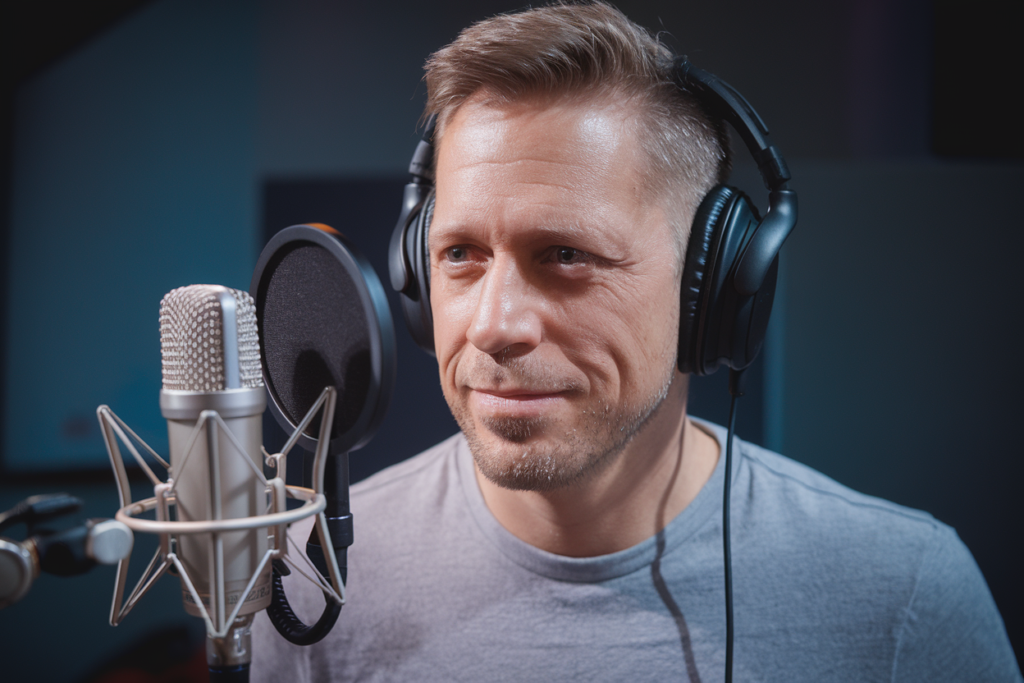Key Takeaways
- High German (Hochdeutsch) is the standardized form of the German language, essential for clear communication across Germany and used in formal contexts like education and media.
- Regional accents reflect Germany’s cultural diversity, each with unique phonetics, vocabulary, and grammar that can complicate comprehension for learners and even native speakers.
- Understanding High German enhances appreciation for regional dialects, allowing better engagement in both casual conversations and professional settings such as voiceover work.
- Pronunciation differences between High German and regional accents are significant; mastering these nuances is crucial for effective communication in diverse environments.
- High German carries a perception of prestige compared to regional accents, which are often seen as warm yet less formal; balancing this distinction is important for professionals in the field.
Ever wondered why High German sounds so different from the regional accents you hear across Germany? You’re not alone. Many language learners and even native speakers grapple with understanding these variations. While High German is the standard form of the language, regional accents add rich flavors that can confuse or delight.
Overview of High German
High German, known as Hochdeutsch, represents the standardized form of the German language. It’s crucial for communication across Germany and serves as the foundation for formal education, media, and literature. You’ll notice that it’s often used in settings where clarity is key, such as news broadcasts or official speeches.
High German emerged from various dialects spoken in southern and central Germany during the 16th century. It gained prominence through Martin Luther’s translation of the Bible, which helped unify diverse dialects into a more cohesive language structure. This unification became essential for fostering mutual understanding among speakers from different regions.
Understanding High German provides benefits beyond basic communication. It allows you to appreciate cultural nuances present in literature and film. Moreover, mastering this standard form can enhance your ability to engage with regional accents effectively. While regional dialects add charm and depth to conversations, they may pose challenges if you’re unfamiliar with their unique phonetics or vocabulary.
In professional environments like voiceover work, proficiency in High German matters greatly. Voice artists often need to adapt their skills to meet specific demands while maintaining clarity and expressiveness inherent to High German pronunciation. The ability to convey emotion through tone while adhering to standard linguistic rules sets apart skilled voice actors from beginners.
Overall, grasping High German equips you with essential tools for navigating both formal contexts and casual conversations across different regions of Germany.
Characteristics of High German
High German, or Hochdeutsch, stands out as the standardized version of the German language. It serves as a vital means of communication across Germany and acts as a cornerstone for formal education, media, and literature.
Phonetics and Pronunciation
Phonetics in High German differ significantly from regional accents. Standard pronunciation emphasizes clear articulation of vowels and consonants. For example, the ‘ch’ sound in words like “nicht” is pronounced distinctly compared to some dialects where it may soften or blend with surrounding sounds. Such clarity enhances understanding, especially in professional settings like voiceover work, where precise delivery matters. This emphasis on phonetic uniformity aids not only learners but also voice artists aiming for consistency in their performances.
Grammar and Vocabulary
Grammar rules in High German are more structured than those found in regional dialects. You’ll notice consistent verb conjugations and noun declensions that follow specific patterns. Vocabulary tends to lean towards standard terms recognized nationwide rather than local slang or expressions unique to certain areas. This standardization makes High German accessible to newcomers while providing a solid foundation for advanced usage—essential skills for voice actors who need to convey messages clearly without regional biases influencing comprehension.
Understanding these characteristics enriches your grasp of the language and improves your ability to communicate effectively across various contexts—be it casual conversations or professional endeavors like voiceovers.
Regional Accents in Germany
Germany’s rich linguistic landscape features a variety of regional accents that reflect its cultural diversity. These accents not only add color to everyday conversations but also pose unique challenges for both learners and native speakers.
Overview of Major Dialects
Germany boasts several major dialects, each with distinct characteristics. Some key examples include:
- Bavarian: Spoken primarily in Bavaria, it has a melodic quality and unique vocabulary.
- Swabian: Found in southwestern Germany, this dialect uses softer consonants and specific phrases that can be puzzling to outsiders.
- Saxon: Predominantly heard in Saxony, this accent is recognized by its distinctive vowel sounds.
- Low German (Plattdeutsch): Common in northern regions, it’s quite different from High German, often sounding foreign even to fluent speakers.
These dialects enrich the German language but can complicate comprehension for those accustomed to High German.
Influences on Language Usage
Regional accents influence how people communicate across Germany. For instance, certain areas may favor informal speech patterns or slang that diverge from standardized language norms. This variation makes it essential for voice talents working in voiceovers to adapt their delivery based on the target audience’s location.
The need for clarity grows when engaging with diverse listeners; thus mastering regional nuances becomes vital. Effective communication relies not just on words but also on pronunciation and tone, which vary significantly among dialects. A skilled voice artist navigates these differences effortlessly, ensuring messages resonate well with all audiences.
Understanding regional accents enhances your ability to connect deeply with listeners—whether you’re performing voiceovers or simply engaging in conversation—with everyone feeling included and understood.
High German Compared to Regional Accents
High German serves as the standardized form of the language, while regional accents add depth and variety. Understanding these differences enriches communication, especially in voiceover contexts.
Similarities and Differences
High German shares some similarities with regional accents, primarily in vocabulary and basic grammar structures. However, pronunciation stands out as a significant difference. For instance, a voice actor trained in High German may find that certain sounds or intonations differ when adapting to a regional accent like Bavarian or Saxon. This variation can create challenges for clarity but also opportunities for expressiveness in voiceovers.
Moreover, while you might use formal phrases consistently across regions, dialects introduce slang and informal expressions that can shift meaning. Voice talents must navigate these nuances to connect authentically with their audience.
Perception and Prestige
The perception of High German often carries more prestige compared to regional accents due to its association with education and formal settings. Many view it as the “correct” way to speak, particularly in professional environments such as media or corporate communications. Conversely, regional accents convey warmth and authenticity but sometimes face stereotypes regarding professionalism.
For those involved in voice work—whether you’re a voice artist or aspiring talent—balancing this perception is crucial. Adapting your delivery based on audience expectations enhances relatability without sacrificing professionalism. Understanding both High German’s structure and the charm of various accents helps you craft performances that resonate deeply with listeners from different backgrounds.
Embracing both forms not only widens your skill set but also deepens your appreciation for Germany’s cultural richness—a valuable asset for any voice over actor aiming to engage diverse audiences effectively.
Conclusion
Understanding the relationship between High German and regional accents is essential for anyone looking to navigate Germany’s linguistic landscape. By mastering High German, you equip yourself with a versatile tool for communication that opens doors in formal settings and enhances your grasp of cultural nuances.
At the same time, embracing regional accents allows you to connect more authentically with local speakers, enriching your interactions and broadening your perspective on this diverse language. Whether you’re a language learner or a professional voice talent, appreciating both forms will deepen your engagement with Germany’s vibrant culture and improve your adaptability across various contexts.
Frequently Asked Questions
What is High German?
High German, or Hochdeutsch, is the standardized version of the German language. It serves as a critical means of communication across Germany and is used in formal education, media, and literature. Emerging from various dialects in southern and central Germany during the 16th century, it gained prominence through Martin Luther’s Bible translation.
Why is High German important for learners?
Proficiency in High German helps learners communicate effectively and understand cultural nuances in literature and film. It offers a solid foundation for advanced language use and ensures clarity in both formal and informal conversations throughout Germany.
How do regional accents differ from High German?
Regional accents like Bavarian or Saxon have distinct phonetics, pronunciation, and informal speech patterns that can complicate comprehension for those accustomed to High German. While they share vocabulary and grammar structures with High German, their unique characteristics enrich the language but pose challenges for understanding.
What are some major regional dialects in Germany?
Major regional dialects include Bavarian, Swabian, Saxon, and Low German (Plattdeutsch). Each dialect reflects local culture with unique expressions that can be difficult to grasp for speakers familiar only with High German.
How do voice actors adapt to regional accents?
Voice actors often need to adjust their delivery when working with regional accents to ensure relatability while maintaining professionalism. Understanding these nuances enhances their ability to connect with diverse audiences effectively.
Does speaking a regional accent affect professionalism?
While High German is associated with education and formality, regional accents convey warmth and authenticity. However, they may face stereotypes regarding professionalism; thus, finding balance is crucial for effective communication in voiceover work.
Can mastering both High German and regional accents benefit me?
Yes! Mastering both allows individuals to widen their skill sets while deepening appreciation for Germany’s cultural richness. This versatility is especially valuable for engaging diverse audiences effectively as a voice talent.







